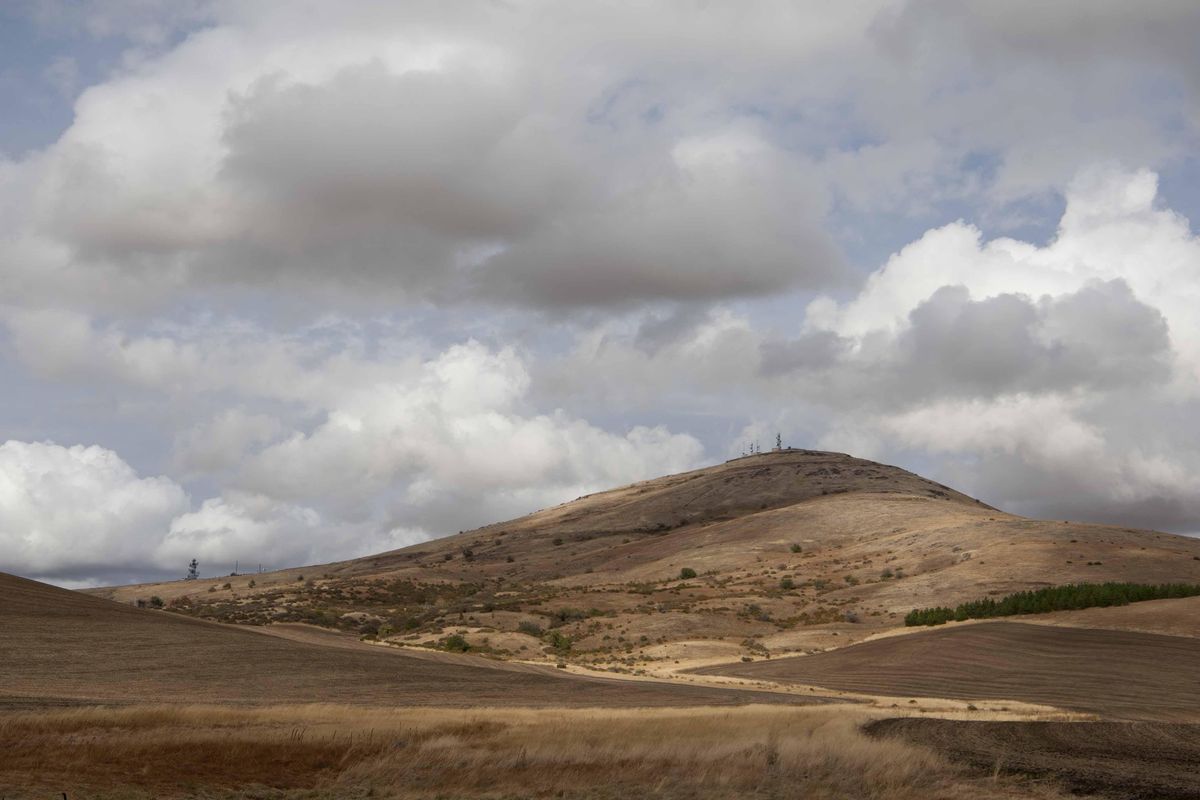Two more ‘lost apples’ found at Steptoe Butte

The remnants of historic orchards on the slopes of Steptoe Butte have yielded two apple varieties previously thought to be lost.
Hundreds of century-old apple trees dot the regional landmark rising from the Palouse south of Spokane. Some are found in the picnic area at Steptoe Butte State Park.
A retired investigator from Chattaroy has turned his skills into a hunt to find and document apples that were not known to exist today.
It is not an easy job, said Dave Benscoter, the so-called apple detective.
“So many apples do look alike,” he said.
Earlier this week, Benscoter announced that heirloom apple experts had confirmed his finds of the previously lost Arkansas Beauty and Dickinson apples varieties at Steptoe Butte.
The finds are the second and third lost apple varieties rediscovered by Benscoter over the past several years.
Benscoter previously found the Nero apple at Steptoe Butte. He also found a Fall Jeneting variety in Colfax in 2013, the second known tree of its type in the U.S.
Apples are an important part of American culture. Hard apple cider was hugely popular in early America.
The fruit, especially the flavors and memories of older varieties, connect deeply with people, especially older adults who remember the farms and orchards from growing up.
After Benscoter announced discovery of the Nero a year ago, he was flooded with calls and requests from people who wanted to know more. He has been making public appearances to share his knowledge.
“Everybody wants to talk about the apples they would pick and eat,” he said.
“People really feel they are a part of our heritage – the memories they bring back,” he said.
Local interest in Whitman County took off.
Benscoter has enlisted help from the Whitman County Historical Society as well as private landowners who last year purchased 437 acres of the butte next to the state park.
The acreage was purchased with an eye on preserving it as a remnant of the historic Palouse Prairie habitat.
The private land holds many of the old trees.
A donor has offered to provide several thousand dollars to help pay for the search for more lost apples, said Joan Folwell, one of the private landowners and a member of a Lost Apple Project committee set up through the historical society to oversee the donation and ongoing research.
Folwell also holds positions on the boards of the Palouse Prairie Foundation and Palouse Conservation District.
Her husband, Ray Folwell, is a retired Washington State University associate dean who taught agricultural economics.
“I’ve sort of caught Dave’s enthusiasm for what he is doing,” Joan Folwell said.
Whitman County is a good place to search for lost apples because of the effort of homesteaders to eke out a living in the late 1800s and early 1900s. Land not suitable for plowing was often used for orchards. Many of the trees have survived.
Benscoter said as many as 13 more lost apple varieties may be growing in Whitman County.
The fact that the old trees still grow shows how resilient they are, making them a potential source for new strains that are resistant to pests, diseases, heat, drought and cold.
Once the lost apples are identified, they can be reproduced through cuttings of shoots, which are then grafted onto other apple stems or young root stock.
Folwell said that early steps are underway to get the historic apples back into at least limited production.
Last year, botanists at WSU announced they had successfully grafted three shoots of the Nero apple onto healthy stems.
Benscoter has established grafts at his home.
As the apples on Steptoe Butte ripened last fall, Benscoter harvested the ones he suspected of being lost varieties and shipped them to the Home Orchard Society based in western Oregon.
Two experts there said the samples were indeed Arkansas Beauty and Dickinson. The Oregon experts recommended that Benscoter get a third opinion. The apples were shipped to Maine where an expert confirmed their identities.
In his announcement of the new finds, Benscoter wrote, “It is estimated that of the 17,000 named apple varieties originating in North America, only around 3,000 still exist today.”
“Some of the lost varieties are truly extinct, having been chopped down for firewood or ripped out to make room for more profitable crops or buildings,” he said.
The source for his discoveries are orchards planted around the turn of the century by pioneering families, including those of James “Cashup” Davis and Robert and Mecie Burns.
The Arkansas Beauty was found on one of Davis’ old orchards on the west flank of the butte near a communications installation.
The Dickinson was found on a former Burns’ orchard on the north side of the butte near the picnic area.
Benscoter uses historic records to help with identification. Old nursery catalogs show that the lost varieties were being sold in the region, including at the Hanford Nursery in Oakesdale and the Vineland Nurseries Co. in Clarkston.
Nursery owners of the day knew the best varieties for the local climate and would recommend them, Benscoter said.
Over time, growers consolidated production and concentrated on only a handful of popular varieties in the market.
As a result, the thousands of apple varieties being grown on small farms and yards dwindled over time.
In a news release last year, WSU reported that success in establishing grafts “means WSU will have a source of germplasm, or genetic materials, for rare varieties. And in a few years, someone may bite into a new Nero.”